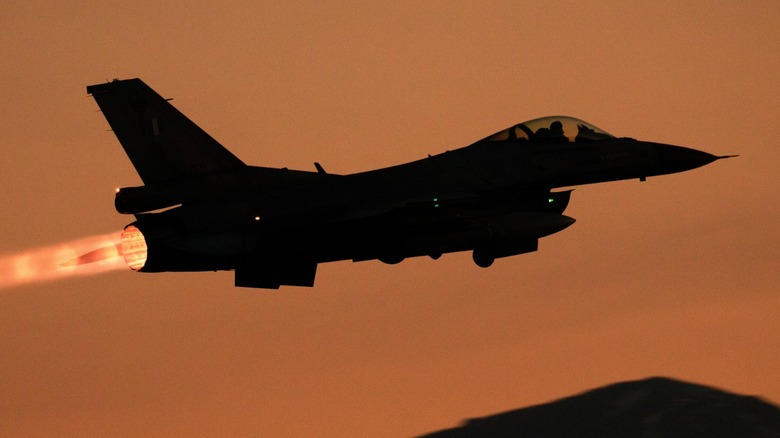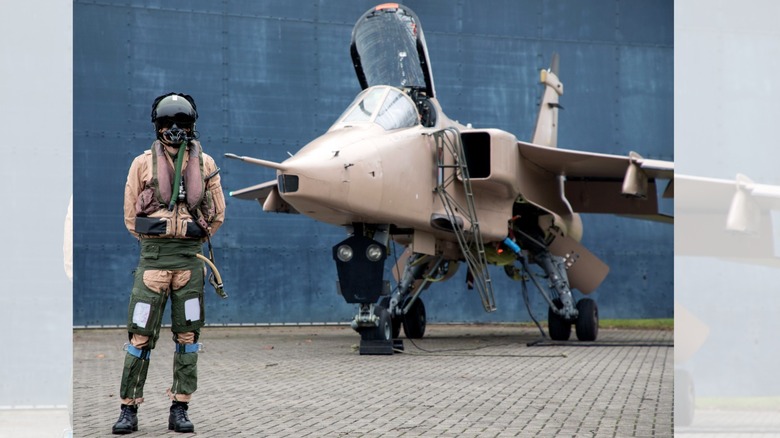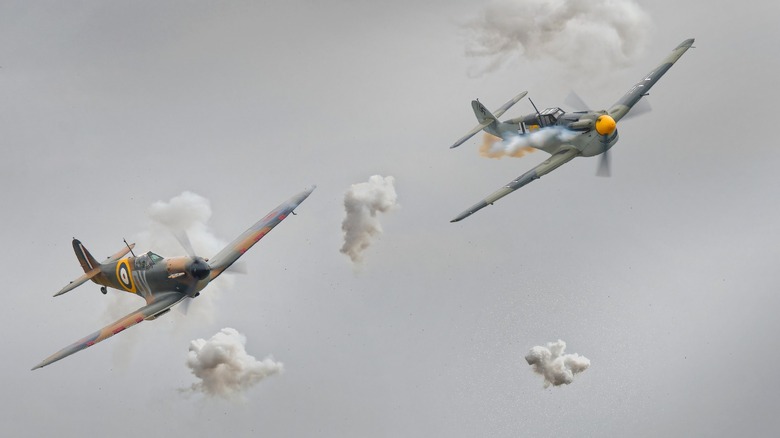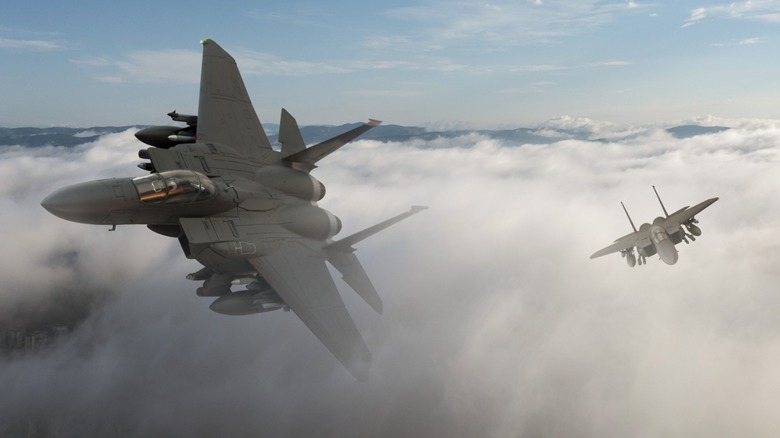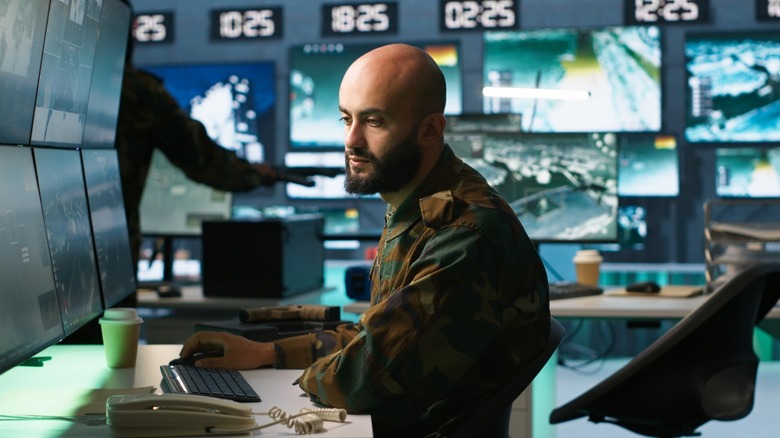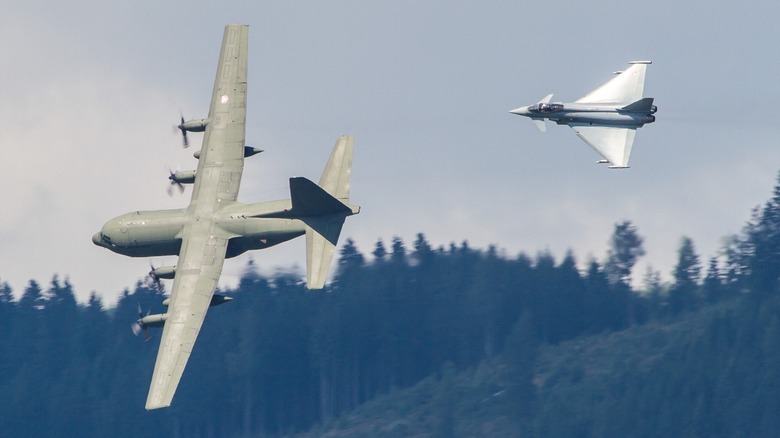What Does It Mean To Scramble Jets And How Long Does It Take?
If you read military novels or watch military aviation movies, you would've probably heard of scramble. When this happens, you see pilots and aircrew running around the airbase or a carrier deck, and then jets, usually fighter jets, take off a few moments later. This is often followed by a spectacular air-to-air battle, with fighter planes facing off with enemies in dogfights.
Although it may look like a simple procedure of an aircraft fleet taking off in a hurry, a scramble is actually a complex coordination between various bases, detection platforms, personnel, and equipment. And while you may think that scrambles happen rarely, you might be surprised to know that they happen more often than you'd expect.
Let's look at what exactly a scramble is and how the practice evolved throughout the years. We'll also check out how long it takes to get airplanes in the air from the first instance of detection.
What does scramble mean in military aviation?
According to the Cambridge dictionary, scramble means to "move quickly," and this is exactly what it means for pilots — that they should mobilize quickly from where they're stationed, jump into their planes, and then get them into the air. So, when a scramble is called, the aircraft on alert should get off the ground as quickly as possible.
A scramble is often called so that the jets on alert can intercept another aircraft or fleet that's approaching a country's (or its ally's) borders without permission. A scramble is also sometimes called within a country's borders if a plane or craft is entering a restricted airspace (like the air over Washington D.C.), or if a flight indicates that it has been hijacked. For example, Helios Airways Flight 522 was intercepted by the Greek Air Force after its pilots failed to respond.
But what you may not know is the strategic bombers can be scrambled, too. This was true during the height of the Cold War, when U.S. Strategic Air Command kept several B-52 Stratofortress bombers, some of the oldest aircraft still in service today, on ground alert. This meant that these bombers needed to be ready to take off in around five minutes. That way, the U.S. bomber fleet could get off the ground in case of an attack and conduct an interception or retaliatory strike as soon as possible.
The scramble was invented during the Battle of France and the Battle of Britain
The term scramble was first used during World War II, when the British Royal Air Force (RAF) and French Armée de l'Air pilots were on standby to defend the skies of France against some of these iconic Axis aircraft. When the German Luftwaffe were detected, these Allied pilots would run to their waiting fighter planes, take off, and engage the enemy.
After the Fall of France on June 22, 1940, Hitler set his sights on to Britain, thus beginning the Battle of Britain. First intending to achieve air superiority over the islands, the Germans attacked British military targets, including airfields, ports, factories, and radar installations. However, the country's sophisticated air defense network, the Dowding System, gave the British Fighter Command and its fighter pilots enough time to get their Spitfires and Hurricanes — two of the most notable aircraft that fought during the Battle of Britain — mobilized to meet the German threat.
With the Luftwaffe failing to achieve air superiority over the U.K., the military changed its strategy to bombing London — called the Blitz — hoping to break the will of the British people. However, even this failed, leading Hitler to call off his invasion plans against Britain.
What happens during a scramble
While informally known as a "scramble," the proper term for this action is Quick Reaction Alert for NATO or Airspace Control Alert among the U.S. Department of Defense. The procedures that make up a scramble will vary between countries and even services, but let's look at how the RAF, one of the first militaries to use this action, does this.
The RAF uses several ground-based military and civilian radars to monitor the airspace around the UK. This system works 24/7, 365 days a year to build a Recognized Air Picture (RAP), which tells the operators the location and identification of every aircraft in and around the Home Islands. The team is located at the Control Reporting Center (CRC) in RAF Boulmer, located in Northern England, and it shares the data with the National Air and Space Operations Center (NASOC) at RAF Air Command in High Wycombe. This is the headquarters for the Air Command and is located about 260 miles south of RAF Boulmer.
If the CRC saw an unidentified aircraft, it would inform NASOC, which would then decide whether it warranted an interception. If that is the case, it will tell the CRC to scramble jets. The CRC then passes on the command to RAF Lossiemouth in Scotland, some 170 miles north of RAF Boulmer, which would send out Eurofighter Typhoon jets, one of the most advanced jets flying today, to intercept the contact. Pilots at RAF Coningsby, some 170 miles south of the CRC, are also alerted to standby in the cockpits of their fighters in case additional support must be deployed.
How long it takes to put aircraft in the skies
As you can see, scrambling a jet is much more involved than just the pilots running to their aircraft. It takes about four to five minutes for pilots on standby in their flight suits to get into their fighter jets that are armed and fueled, strap in and start up the aircraft, taxi and line up on the runway, and then punch afterburners to take off. This time is cut down by around two minutes if the pilots are already seated and waiting in their cockpits, like the standby flight at RAF Coningsby.
However, before the command to scramble is given, a several decisions have to be made first. One example in June 2023 showed that it took the North American Aerospace Defense Command (NORAD), the organization that protects the air space of the U.S. and Canada, about an hour and half to decide if it should scramble six F-16 fighter jets. ABC News reported that a Cessna Citation private jet was unreachable some 15 minutes after it took off from Tennessee, and that NORAD has been informed of this about eight minutes after air-traffic control (ATC) was last able to contact the pilots.
NORAD held off deploying jets, though, because the private jet was following its filed flight plan. However, when it reached its supposed destination and turned back heading towards Washington, D.C, instead of landing. So, at around 3 pm, F-16 fighter jets from three different air bases were sent to intercept and investigate the jet. By 3:20 pm, two F-16s from Maryland reached the aircraft. While it took NORAD around an hour and half to decide to intercept the unresponsive plane, it took the fighter jets just 20 minutes to intercept the Cessna once their pilots received the command.
What pilots do when they get in the air
When the scramble was introduced in World War II, the fighter pilots were tasked of shooting down the enemy aircraft coming into France and England intending to bomb targets. During the Cold War, the SAC's ground alert forces were intended to conduct retaliatory strikes in case the Soviet Union bombed the U.S as a form of deterrence.
Thankfully, we don't have to worry about those today. Instead, scrambles are often airborne police work, wherein they look at aircraft that are unresponsive and chase, identify, and escort them as needed. Although the fighter jets conducting these interceptions are armed, their mission is about keeping the peace. NATO aircraft are often seen intercepting and escorting Russian aircraft flying in international airspace (which the Russians does to NATO aircraft as well and is standard practice), other missions include helping out lost private pilots, assisting air crews with medical problems, and catching drug runners flying low to avoid radar detection.
